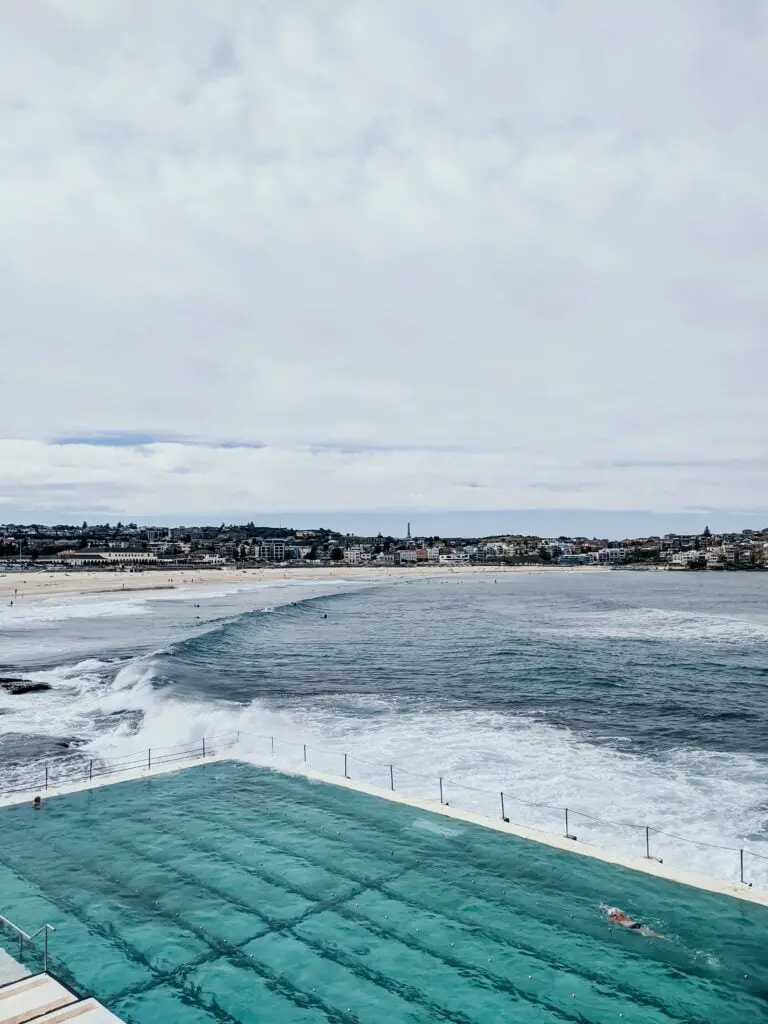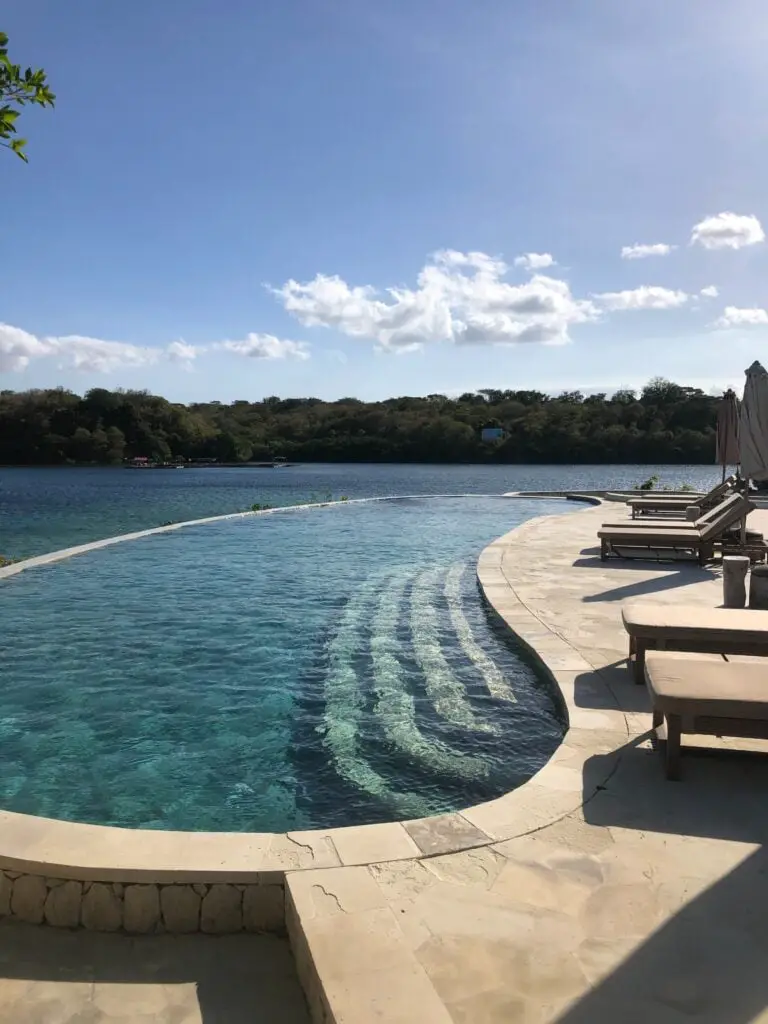Your in-ground pool’s ideal appearance—tropical blue or gleaming white—might have faded. The origin of this dingy appearance is the pool’s finish on the sides and bottom, as long as the water is in good condition.
UV radiation, chlorine water, and human activity are all constants in pools. So it’s no surprise that the average rubber-based pool paint only lasts four to five years.
You should be able to paint your pool in a day or two. Preparation is the key to attractive, long-lasting results in almost any type of paint work. If you thoroughly drain and clean the pool, the painting process should be rather rapid.
The Best Pool Paint
Rubberized pool paint is one of the greatest forms of paint for a pool. It adjusts to the needs of pools because it is developed specifically for them. It expands and shrinks, is strong, resistant to mold, mildew, and fungus, and is unaffected by pool chemicals.
On new, unpainted pool surfaces, rubberized pool paint works nicely. Because the new and old paints chemically fuse, it’s also great for painting over existing rubberized paint.
This paint cannot be applied over previously applied epoxy or acrylic pool paint. It is not suitable for use on fiberglass or vinyl-lined pool surfaces.
How Much Pool Paint Should I Use?
Depending on the manufacturer’s recommendations, purchase one gallon of paint for every 300 to 350 square feet of pool surface. When calculating how much paint is required, keep in mind that two coats will be required.
Calculator for Pool Paint
To figure out how much paint you’ll need for your pool, use this formula:
- Multiply the pool’s length by its width.
- Multiply length x average pool depth x 2
- Multiply width x average pool depth x 2
- Add the totals from steps 1 through 3 together.
- Divide the result of step 4 by 300 or 350, depending on the paint coverage specified on the paint project.
- Double the final number
- Round the final amount from step 6 to the nearest gallon—this is how many gallons of paint you’ll need to buy, depending on manufacturer specifications, for every 300 to 350 square feet of pool surface. When calculating how much paint is required, keep in mind that two coats will be required.
Recommended Pool Painting Conditions
Paint your pool away from direct sunshine. As a result, it’s preferable to paint first thing in the morning. Paint in temperatures between 50°F and 85°F. The surface must be thoroughly dry before proceeding. Also, do not paint if you predict rain within the next day or two.
What You’ll Need
Equipment / Tools
- Roller frame
- 3/8-inch lambskin roller cover
- 3-1/2-inch paint brush
- Nylon-bristle cleaning brush
- Roller extension pole
- Submersible pump
- Discharge hose
- Nylon rope
- Pool brush
- Shop vacuum
- Tarp or sheet plastic
- 5-in-1 tool
Materials
- Rubber-based pool paint
- Mineral spirits or paint thinner
- Citrus based degreaser/cleaner

Instructions
Pool Drainage
Plan ahead of time because draining the pool is a time-consuming task. It can take up to 16 hours depending on the size of the pool.
- To remove huge particles from the pool, skim it by hand.
- Unplug and turn off the pool filter.
- Connect the submersible pump’s discharge pipe.
- Extend the discharge hose to a street gutter, sanitary sewer, or an area that can be irrigated with this grade of water.
- Lower the pump to the pool’s bottom with nylon rope, ensuring that the pump’s cord extends outside the pool.
- Connect the pump to a ground-fault interrupter (GFI).
Scrub the Pool as the Water Drains
While the pool drains, use the pool brush and extension pole to scrub the pool’s sides. You don’t have to be at the pool all the time, but you should be close by.
Scrub downward, allowing particles to fall into the pool’s draining water. Although the submersible pump will remove some of the material, expect to clean up much of it by hand in the end.
Remove Paint
When the pool is dry, look for flaking or peeling paint on the walls and bottom. Scrape the surface with the 5-in-1 tool.
Clean Pool
Remove any debris from the bottom. Using the nylon-bristle cleaning brush, clean the pool with the citrus-based degreaser/cleaner. Fill the sides with fresh water and pump it out. Use the shop vacuum to complete the cleaning. Allow the pool to completely dry.
Get Ready to Paint
Connect the extension pole to the paint frame. Insert the roller cover. Set up shop at the pool’s bottom, near the drain, with all the essential gear. Use a tarp or plastic to cover the drain.
Paint Cut-In
With the paint brush, fill in the edges. Edges could include:
- Under the bullnose
- Until the tile coping
- Near pool ladders
- Near drains
- Steps or ledges will be painted a different color.
Paint the pool
Roll the rubberized paint from top to bottom over the pool. Avoid using a heavy coat. Apply two thin coats instead. A single heavy layer of paint may cause the paint to fail. Do not dilute the paint.
Maintain a moist edge by working quickly and in tiny areas. If an area is already dry, avoid painting over it because this might result in pockmarks and a hard texture.
Cleaning
Mineral spirits or paint thinner can be used to clean up
Allow Paint to Dry
Rubberized pool paint, unlike water-based paints, does not cure by evaporation. This solvent-based paint may take up to 7 days to fully cure before you can re-fill the pool. Using huge fans to ventilate the pool will help to speed up the drying process.
To know the pricelist of grout, Tile Grout Guaranteed Best Construction Material Philippines’ Prices
To know other construction guides, tips, and methodology for beginners, veterans, and contractors, please see here.
To know the flood prone areas in the Philippines, Top 10 Flood-Prone Areas to Live in the Philippines.
To know more about Concrete Hollow Blocks, Simple Reasons Why Hollow Blocks are Highly Used in the Philippines
To know more about Hammers and Nails, Tips for Guaranteed Best Technique for Hammering Nails
To know more about Tees and Wyes, What is the Guaranteed Best to Use: Sanitary Tee Vs Wye

